I have used Amazon affiliate links on this page. As an Amazon Associate, I earn a commission from qualifying purchases at no added cost to you. Thank you!

Table of Contents
Introduction
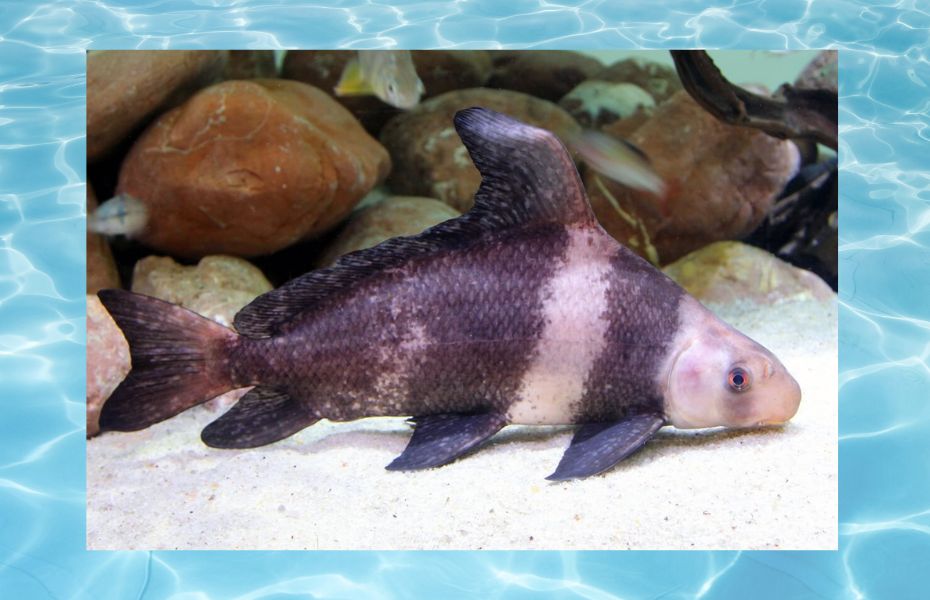
The Chinese high fin shark is a freshwater species native to the Yangtze River Basin in China. The fish has been marketed by many names; Chinese high fin banded shark, Chinese banded shark, Chinese sailfin sucker, topsail sucker, and others. To avoid naming confusion we can use refer to its scientific naming which is Myxocyprinus asiaticus. Despite their intriguing name, they aren’t true sharks, but timid, large freshwater fish.
These are bottom-dwelling fish, and their bodies are perfectly adapted to live and find food at the river bed. They are basically large algae eaters and have mouths shaped as suckers. You might misidentify them as catfish if they possessed barbles as well. But somehow they don’t have barbles.
These algae eaters have mouths that are clearly sucker-shaped. Although they lack the barbels of other bottom-feeding fish, they do have small papillae and a single row of pharyngeal teeth.
Scientific Taxonomy of Chinese high fin shark
| Class | Actinopterygii |
| Order | Cypriniformes |
| Family | Catostomidae |
| Subfamily | Myxocyprininae |
| Genus | Myxocyprinus |
| Species | Myxocyprinus asiaticus |
Natural Habitat
In their natural habitat, these fish play an important role in their ecosystems. And these fish grow more than a meter, so they are famous as food fish in the Yangtze river basin.
They swim upriver for breeding just like Salmons do. Their breeding waters are high-flowing and shallow.
The Chinese high fin banded shark wild population is severely depleted, due to pollution and the overfishing of certain areas, dams preventing their natural breeding migration, and overcollection for the aquarium trade. The species is currently on China’s Endangered Species List and is protected by law.
They are unique fish on their own. But that’s a later section in this article. So make sure to read along until the end!
The Dramatic Change of Size & Color During The Lifespan
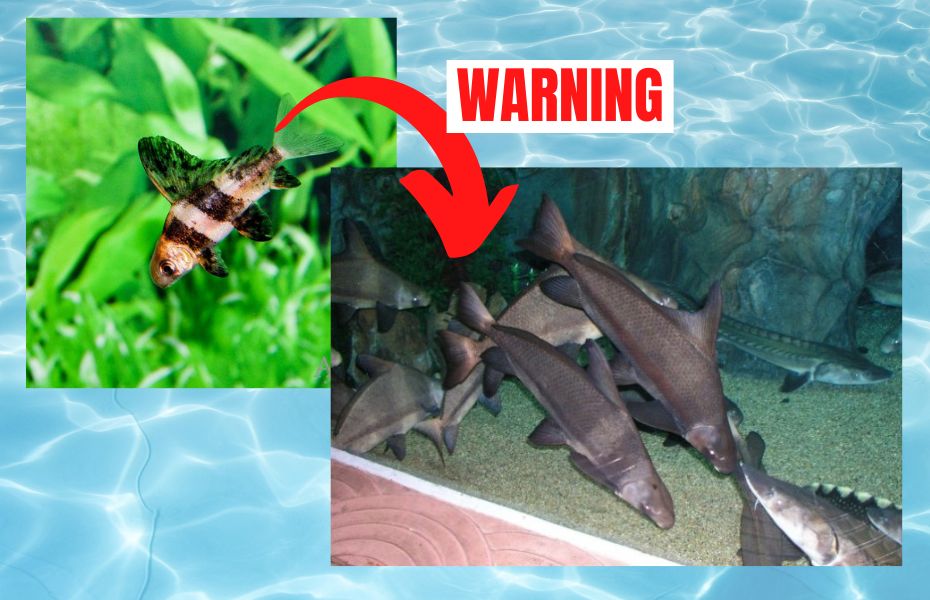
One of the strangest things about Chinese High Fin Banded sharks is that they appear completely different from those who have seen them only a few months before. Some have referred to this strange phenomenon as the “reverse ugly duckling” effect.
Young sharks display a distinct pattern of three dark bands on their otherwise brown bodies. But once they reach a length of 30–36 cm (12–14 in), the characteristic pale bands disappear and their color gets darkens.
Juveniles are much more attractive than full-grown adults. They have a dominant high dorsal fin which is triangular in shape. This high dorsal fin is long and goes all the way down to where the rear of the anal fish aligns. When they become adults this high fin converts to a smaller less prominent fin. You will find that adult fish are very elongated in shape and less attractive than juveniles.
Their growth rate can be super fast. So it must be the main factor when you are going to choose them as pet fish. By the time they reach their maximum size which can be around 1.35 meters you will need a large pond or a large tank to house them in. They get around 8 inches in the first year of their lives. They will become 1 foot and 8 inches when they become three. To reach their maximum size which is around 1.35t meters in length it takes longer than six years. But when they do, a full-grown fish will weigh around 40 Kg!
Now you know why these fish are popular in the Chinese food industry!
Lifespan
Chinese high fin banded shark lives a very long life in the wild. Don’t be surprised to find out that they can live somewhere around 25 years when undisturbed! Before being certified as a protected fish species, the big adult high fin sharks were almost gone from their natural habitats. Now they can be only caught for food in fish farms where they are raised as food fish.
How to improve their lifespan in captivity?
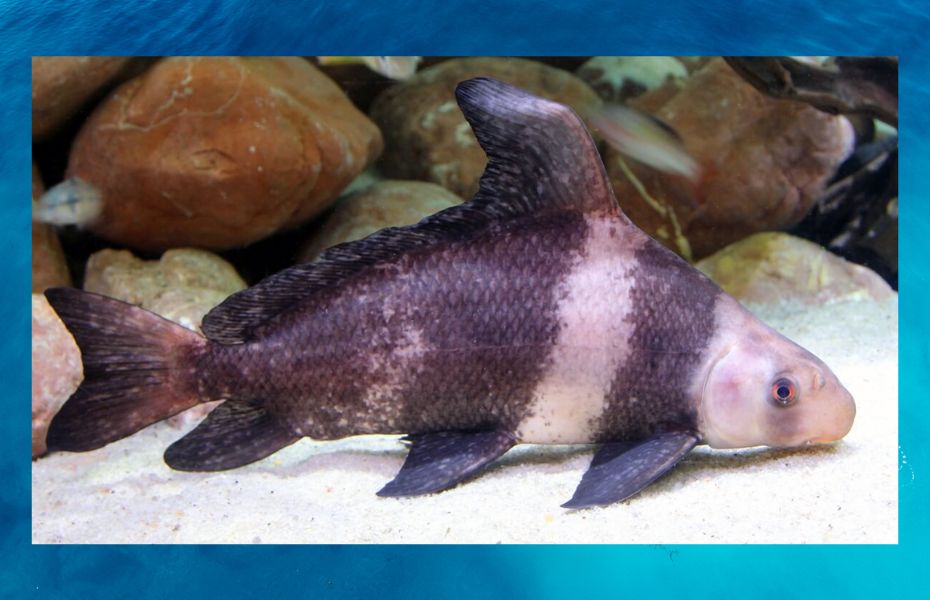
If you want your Chinese high fin sharks to live as long as 25 years, then you need to give them enough space to grow. One of the main reasons that they die younger in captivity is the inadequate spaces they are used to raising. You need large ponds or very large tanks of somewhere around 300 to 800 gallons to raise them properly or they will die when they are around 10 to 15 years old.
You need to provide the absolute best food and high-end filtration as these large fish require a lot of fo nutrients and produce a large amount of waste in return. At the end of the day by providing enough space with simulated natural habitat, best food, and ideal water conditions, you may be satisfied to have a pet that will live somewhere around a quarter of your lifetime!
Do you love Angelfish as well? Then read about How long do Angelfish live and how to improve their lifespan.
Chinese High Fin Shark Care
The biggest mistake that aquarium hobbyists can do is buy the juvenile Chinese high fin sharks thinking that will stay the same size and the same look. So when these fish become bigger and different, many start to neglect them and even release them into natural waterways, which can turn into a real problem in natural watery ecosystems.
Tank/ Pond Size
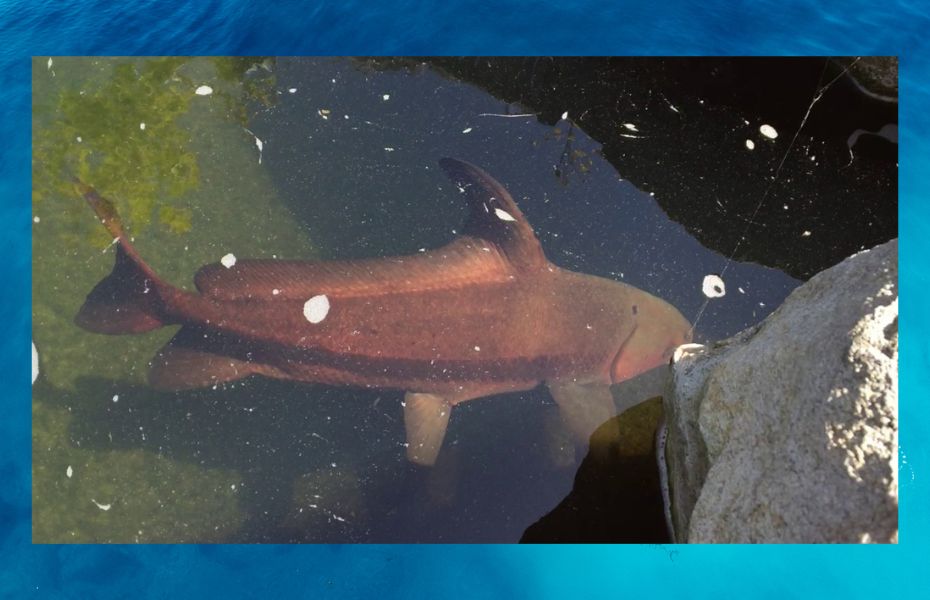
Therefore, as we know now the problem with high fin sharks is that they grow bigger and faster. 55-gallon tanks are enough for some juveniles under one year of age. You may put up to 6 in a 55-gallon tank, but get ready for the bigger tanks and ponds while you can!
Because you will need bigger ponds and tanks that can contain 300 to 800 gallons to house the larger high fin banded sharks. Up to three full-grown fish are ideal for such big tanks and ponds.
Ideal water parameters
The key to becoming a successful fish keeper is to understand the ideal water parameters for different fish species and try your best to keep them at their ideal ranges.
The Chinese high fin shark loves cooler water. In their natural habitat, they live in elevated waters in the Yangtze River Basin which is over 16,000 feet above sea level at the highest point.
The good news is that these are hardy fish that can thrive in a wide range of water parameters. But to raise healthy and long-living Chinese high fin sharks you should keep your water parameters under ideal ranges. Under general aquarium standards, this range falls into cooler temperatures. However, to keep such conditions can be somewhat difficult as the fully grown fish need outdoor ponds or larger fish tanks to survive.
| Water Temperature: | 13 to 24°C |
| Hardness: | 4 to 20 dGH |
| pH: | 6.8 to 7.5 |
Checkout below water testing kits:-
Checkout below thermometers:-
What can you feed Chinese high fin sharks?
Chinese High Fin Banded Sharks are omnivorous opportunists; they will eat anything, and they’re known to devour massive quantities of algae. Their huge appetite for algae should not make you label them as herbivores.
As a bottom dweller, a diet of sinking fish food is preferred, but this species will eat just about anything if it is varied enough. Do not underestimate the importance of high-quality proteins and vitamins in this fish’s diet.
There are plenty of sources of protein to feed your high fin sharks, including live and frozen bloodworms, earthworms, tubifex worms, brine shrimp, and crustaceans. As a side effect of this protein-rich food and some leftovers, the algae growth can be promoted; these algae again become the food of high fin sharks.
Checkout below food products:–
The temperament of the Chinese High Fin Shark
Regardless of their menacing appearance and trade name, Chinese High Fin Banded Sharks are actually rather peaceful. However, these sharks are generally voracious eaters but aren’t very active during most hours of the day. From juveniles to mature, Chinese High Fin Banded Sharks spend their days resting at the bottom of the tank. But they do get along well with other creatures, including other big fish in a community tank.
Tankmates
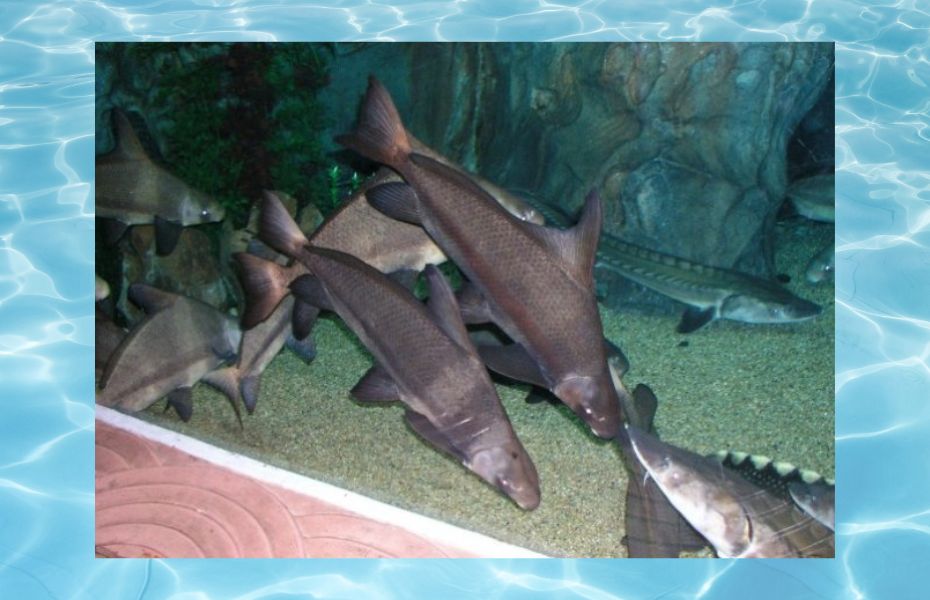
While there is a number of species that can live peacefully with Chinese High Fin Banded Sharks, it is essential that you choose tankmates carefully in order to maintain a positive environment. While these fish are quiet, they may be frightened if kept with highly aggressive tank mates.
As the Chinese high fin shark loves cooler water, you have to select other tank mates which also can thrive in such conditions.
You can keep multiple Chinese High Fin Banded Sharks in the same environment. Not only that, but a small group makes individuals feel more confident in safety. And when it comes to tank mates of different species, you can keep fish that can withstand cooler temperatures. Many goldfish varieties, koi, and loach species are popular combinations of choices.
Breeding Chinese High Fin Shark
Breeding Chinese High Fin banded sharks in captivity is impossible without the use of hormones.
In the wild, these fish are migratory, moving toward shallow waters to lay eggs during their breeding season. After breeding these fish go back to the deeper sections of the river. These conditions occur in nature and are extremely difficult to replicate. Therefore, captive breeding typically involves hormones, but it’s easy to get too much and kill your fish. Most of the time the fish go through stressful activities when they are artificially bred using hormones.
Conclusion
If you can manage fully grown adults and maintain water qualities and parameters in big ponds or other aquaria, the Chinese high fin sharks can be an amazing addition. However, the average aquarists or newbies to the hobby should avoid raising such large fish without being aware of the responsibilities of adopting a huge fish. There are beginners friendly fish like Polar Blue Parrot Cichlid, Red Empress Cichlid, Platy Fish , Angelfish Live, Goldfish that they can try before going for the big boys!
